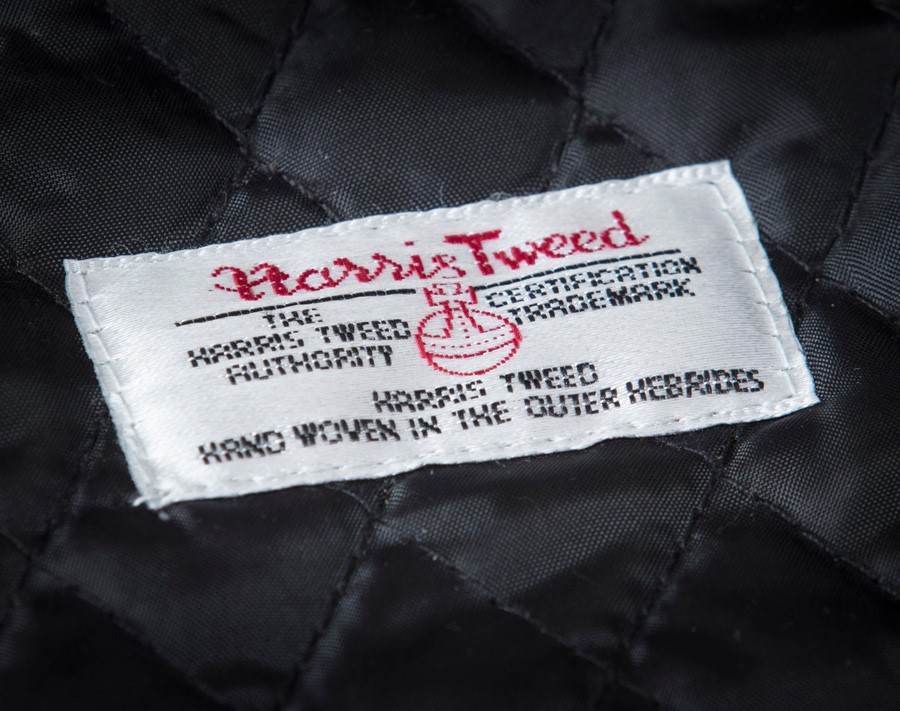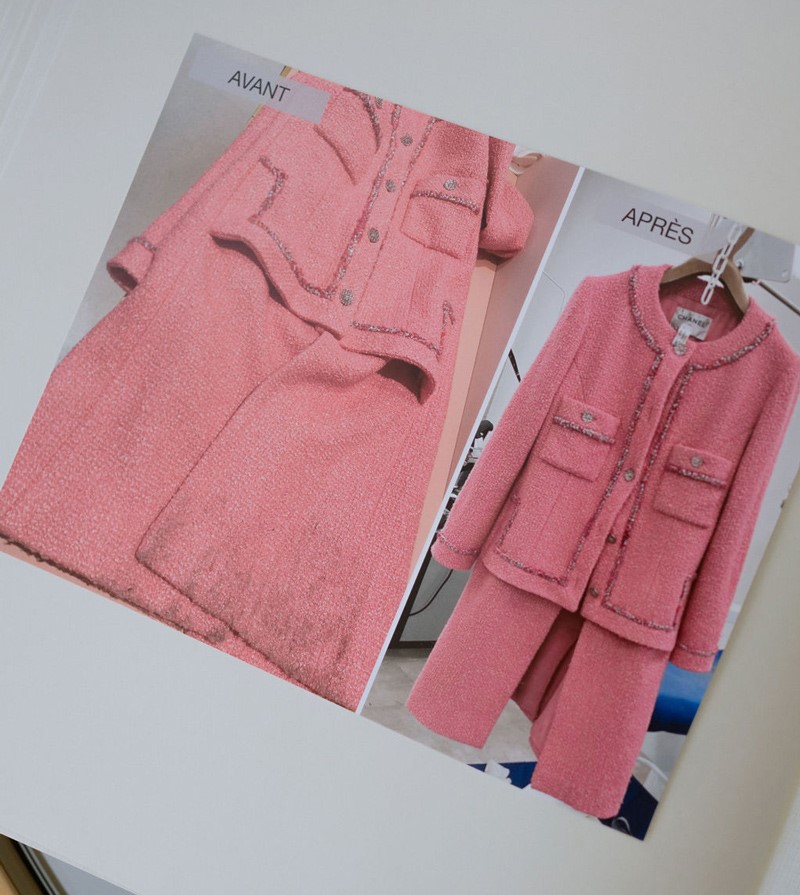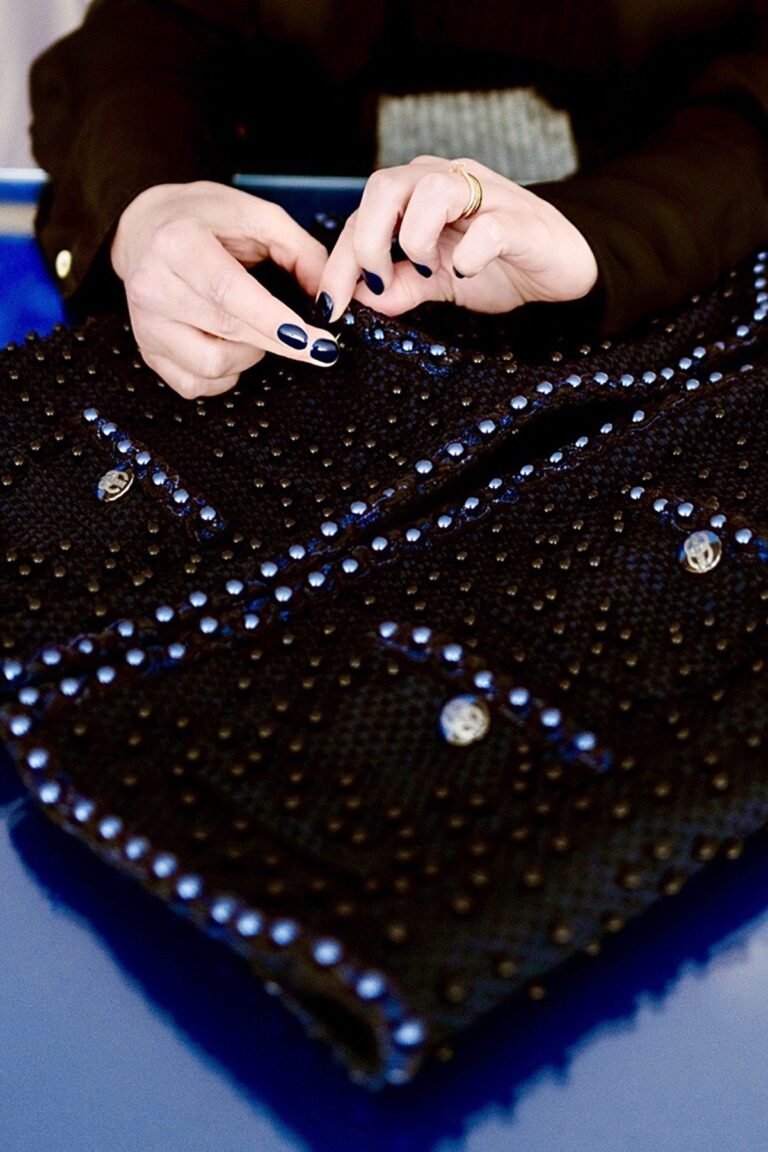Tweed makes its mark
Born in the heart of the Scottish Highlands, tweed owes its name to the River Tweed, which flows along the border between England and Scotland. Originally made from carded wool, this tightly woven fabric (known as twill or “tweel”) was crafted into warm, thick, water-resistant, and durable garments. Farmers and fishermen wore them to withstand the harsh winters and strong gusts of wind.
In the 19th century, tweed clothing began to evolve. Around the 1840s, Lady Dunmore taught young women on the Isle of Harris (Hebrides archipelago) modern weaving techniques, encouraging them to diversify patterns and add plant-based natural colors. Shades drawn from wild nature—greys and greens from lichen, browns and ochres from plants, blues from irises, purples from bilberries—formed a discreet palette ideal for camouflage during hunting parties.
The local economy boomed, and Harris Tweed spread across the Kingdom. Shortly after, Prince Albert of Saxe-Coburg and Gotha, consort of Queen Victoria, dedicated a unique tweed pattern to Balmoral Castle—blue with white flecks, echoing the grey of the granite mountains.
The Balmoral tweed jacket became a must-have for outdoor activities, hunting, and fishing. Tweed garments gained prestige and were adopted by aristocracy and the upper bourgeoisie. The trend spread throughout the Highlands, where each estate developed its own signature tweed, asserting its identity. Tweed took on a wide range of patterns: Prince of Wales, herringbone, checkered herringbone, barleycorn, striped, houndstooth, windowpane, and tartan. Demand grew, and production followed suit. In the Kingdom of Tweed, jackets from Harris, Donegal, and Sanoxy became iconic.



Gabrielle Chanel – Tweed’s Revolution through the Chanel Suit
Gabrielle Chanel discovered tweed in the 1950s through the Duke of Westminster. She embraced it with genius, creating her legendary suit, freely inspired by menswear.
With Chanel, the suit became free, fluid, and comfortable—doing away with stiff, constricting silhouettes. It was transgenerational, suited to both casual outings and formal events. Tweed was modernized, feminized, and endlessly reimagined. It was woven with cotton, silk, linen, colorful threads, gold and silver filaments—adding femininity, glamour, modernity, and playful flair.
The Chanel suit became emblematic of the House of Chanel and conquered the world. Celebrities and public figures embraced it—Jackie Kennedy first among them. The fashion world was abuzz.
Tweedmania had begun!
Tweed Through Time: La Sirène, Experts Who Extend the Life of Your Exceptional Pieces
Tweed is constantly revisited, reinterpreted, reinvented… This mythical fabric now exists in countless variations. It may include natural fibers (cotton, rayon, silk, linen, wool) and synthetic ones (nylon, polyester…).
At La Sirène, a clothing spa in the heart of London, we regularly care for tweed items: dresses, suits, skirts, jackets, trousers, coats, hats, caps, scarves, bags, and accessories. Our master dyers understand all its materials, nuances, and secrets.
We’ve developed eco-friendly treatments combining traditional know-how with cutting-edge technology. Hand cleaning respects the integrity of fibers and fabrics; stain removal is precise and delicate. A natural dry-cleaning process may complement the care.
Proper tweed care is essential to extend the life of your garment. If your item is damaged (holes, tears, burns), we offer a repair and reweaving service on request. Tailoring alterations are also available.
At La Sirène, each piece is handled with care, every fiber respected. Thanks to our expert treatments, your tweed garments can continue to journey through seasons… and generations.


Our Expert Tips
- Regular brushing: Use a soft clothing brush to remove dust and dirt particles from your tweed. Gently brush in the direction of the weave to avoid fiber damage.
- Avoid soap, hand or machine washing: Tweed is delicate and may shrink or warp when exposed to water. Opt for professional cleaning.
- For small stains: Use a clean, damp cloth to gently blot the affected area. Avoid rubbing. If the stain persists, consult a professional.
- Drying: If your item gets wet, lay it flat on a clean towel to dry.
- Storage: Hang your jacket or suit on a padded hanger in a well-ventilated closet to avoid creases and moisture.

